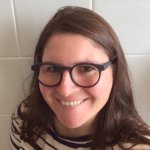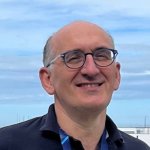Researchers
The Research Team
The Remote Sensing team sits within the Coastal and Oceanic Systems (COS) program of the CSIRO Environment Research Unit.
Core members

Tim Malthus
- A senior scientist with over 30 years experience in optics, calibration and validation, field spectroscopy, sensor development and remote sensing of water quality. Tim’s most recent research has focussed on tools for the detection of harmful algal blooms in both inland and coastal waters. This has ranged from the development of low cost optical sensors, apps for use by citizen scientists and observations using satellites in space. Tim is a co-creator of CSIRO’s patented HydraSpectra near surface sensor for the measurement of water quality parameters. He also leads Workpackage 2 related to In Situ Sensor Networks of the joint CSIRO/SmartSAT CRC funded AquaWatch Australia Mission and leads a number of related AquaWatch pilot projects. Prior to joining CSIRO, Tim was Director of the Natural Environment Research Council (NERC, UK) Field Spectroscopy Facility based at the University of Edinburgh. He has published over 120 peer-reviewed papers, with an H-index of 35 and an i-10 index of 72.
- Primary EmailTim.Malthus@csiro.au

Hannelie Botha
- Hannelie is a remote sensing scientist with expertise in environmental remote sensing, hyperspectral radiative transfer modelling and the application of remote sensing solutions to environmental management problems. She has been involved in environmental remote sensing applications and settings ranging from coral reef, coastal and estuarine habitats to inland water bodies, rangelands and agricultural land. Hannelie’s current work focuses on the application of optical models to multispectral satellite data to discriminate marine habitat and benthic substratum type in optically shallow coral reef and coastal waters and the assessment of water quality in marine and fresh water environments.
- Primary EmailElizabeth.Botha@csiro.au

Nagur Cherukuru
- Dr Nagur Cherukuru is a research scientist with the Coasts Program in CSIRO's Oceans and Atmosphere Flagship. His research focuses on bio-optical investigations of particulate and dissolved substances in aquatic media, underwater light climate modelling and remote sensing algorithm development for inland, coastal and oceanic environments.
- Primary EmailNagur.Cherukuru@csiro.au

Gemma Kerrisk
- Gemma is a Research Projects Technical Officer specialising in bio-optical field measurements. She coordinates the development and maintenance of autonomous monitoring stations and provides research project support. She leads field crew's establishing nationally applicable databases of in situ bio-optical measurements in Australia which are used towards developing the relationships between water quality parameters and satellite imagery. Gemma has a passion for aquatic environments and has a keen interest in remote sensing for water quality monitoring applications.
- Primary EmailGemma.Kerrisk@csiro.au

Yi Qin
- Yi Qin's current research focus is on the retrieval of atmosphere, ocean and land surface properties, including aerosols, clouds, surface reflectance, Bidirectional reflectance distribution function (BRDF), surface solar irradiance and coastal biomass, using a range of geostationary and low earth orbiting remote sensors, including multi/hyperspectral remote sensors and space-borne LiDAR systems. Dr Qin has strong expertise and interests in radiative transfer and its applications in remote sensing data analysing and remote sensor calibrations. Yi is leading the development of advanced multi-satellite and integrated retrieval methods and operational processing systems, to create a range of high-quality remote sensing products, exploiting advanced computing technologies. Yi’s other work includes developing an operational processing system for the analysing and visualization of long-term aquatic in-situ observations and applications of remote sensing products. For example, solar energy forecasting and the health impacts of airborne particulate matters. Yi is also interested in developing multi-GEO / multi-LEO inter-calibration leading to global radiometric consistency among the GEO/LEO remote sensors.
- Primary EmailYi.Qin@csiro.au

Thomas Schroeder
- Dr Thomas Schroeder has 15+ years experience in the development of remote sensing applications for the retrieval of oceanic, terrestrial and atmospheric properties from air- and space-borne instruments. In his current research he focuses on the development, validation and implementation of dedicated ocean colour inversion algorithms for Australia's coastal and marine ecosystems using multi- and hyper-spectral satellite data to enable reliable mapping, detection and monitoring of aquatic resources. Further to this, he is progressing new strategic research directions in the area of geostationary and radar satellite applications for high-temporal coastal monitoring and the detection of hydro-carbon pollution. Dr Thomas Schroeder is also advancing in-situ bio-optical and radiometric observations for satellite validation under IMOS where he leads the IMOS Ocean Colour Sub-facility and manages the Lucinda Jetty Coastal Observatory. Measurements from this facility are used to inform international space agencies on the accuracy of marine satellite products.
- Primary EmailThomas.Schroeder@csiro.au

Kesav Unnithan
- Kesav is a computer engineer by training with an interdisciplinary academic background in geoinformatics and water resources engineering. He focuses on the development of conceptual and EO-based data-driven modelling of water quality and the impact of floods, droughts and forest fires on the land to coastal outflows. For his PhD, Kesav developed a stand-alone flood inundation model that can be executed for in near real-time for large-scale data-scarce regions. While he is not in front of the computer, he keeps himself busy with autobiographies and trying out different homemade kitchen recipes.
- Primary EmailKesav.Unnithan@csiro.au
Associate members

Janet Anstee
- Janet Anstee's current research is in the application of validated bio-optical models to enable improved discrimination of aquatic water quality and habitat (where optically shallow). Additionally, she works with CSIRO Environment with Remote sensing integration into Hydrodynamic models for forecasting in Australia but with global applicability.
- Primary EmailJanet.Anstee@csiro.au

James Taylor
- James is a research technician with the Aquatic Remote Sensing Team, based in Canberra. He supports fieldwork, sensor maintenance, sample handling, and logistics, including DION operations. James is currently completing his Honours degree in Environmental Science at the Australian National University.

Phillip Ford
- Philip Ford is an Honorary Research Fellow affiliated with the Aquatic Sensing team. Dr Ford has extensive research experience in the interplay between physical, chemical, and biological processes in rivers, lakes and weirs, reservoirs, estuaries and coastal seas. The underlying aim is to understand quantitatively phytoplankton abundance and the factors conducive to the dominance of potentially toxic cyanobacterial species. Phytoplankton carbon fixation is a key element in the carbon cycle in all aquatic systems. Thus, the operation of the carbon cycle involving inorganic and organic carbon species in particulate and dissolved forms, as well as the sources and cycling of essential nutrients is the second, major focus of his work. Practical outcomes of this work include the measurement of fluxes of the two most important “Greenhouse” gases (CO2 and CH4), and the application of optical techniques at a range of scales to understand the aquatic biogeochemistry of aquatic environments. The present focus of his work in the Aquatic Remote sensing team is generating data to underpin the calibration and validation of mathematical models predicting toxic algal abundance.
- Primary Email Phillip.Ford@csiro.au

Faisal Islam
- Dr Faisal Islam is a research scientist at CSIRO, contributing to processing of remote sensing time-series data for water quality monitoring, with a focus on hyperspectral reflectance analysis, as part of CSIRO’s Aquawatch Australia initiative. His work integrates predictive modelling, time series analysis, and automated data pipelines to support environmental decision-making.
- Primary Emailfaisal.islam@csiro.au
Affiliates

Florina Richard
- Florina Richard is a doctoral candidate with the Reef Catchments Science Partnership (RCSP), a collaboration between The University of Queensland and the Queensland Department of Environment, Tourism, Science and Innovation (DETSI). Working closely with CSIRO’s AquaWatch Program, her research focuses on developing ground-to-space water quality monitoring algorithms in the Great Barrier Reef (GBR) waterways. This work is funded by the Queensland Government through RCSP, and she receives the CSIRO Top-Up Scholarship. Her research explores how sediment and coloured dissolved organic matter (CDOM) concentrations can be estimated by integrating in-situ real-time sensors, proximal hyperspectral, satellite remote sensing, and machine learning. Through this project, Florina aims to develop spatio-temporal models that support data-driven strategies for managing GBR water quality. Florina holds Bsc (Biotechnology) and MSci (Research) degrees from Swinburne University and has completed an academic fellowship in the US.

Barbara Robson
- Dr Barbara Robson has more than 20 years of experience in modelling the biogeochemistry and aquatic ecology of rivers, estuaries and coastal systems. She is now working at the Australian Institute of Marine Science but still holds an affiliation with CSIRO as a Visiting Scientist.

Vittorio Brando
- Vittorio is currently based at CNR-IREA (Institute for Electromagnetic Sensing of the Environment) in Italy. Up until 2013, he was a Principal Research Scientist with the CSIROs Environmental Earth Observation Program, Land and Water in Canberra. His research focusses on EO water quality algorithm development for optically complex marine waters and the delivery of optical oceanography data streams for improved environmental management of marine ecosystems. His research skills span optical oceanography in coastal systems, hyperspectral signal and imagery analysis, radiative transfer models, physics-based retrieval of water quality parameters from ocean colour data, shallow water mapping, and assimilation of remote sensing data into biogeochemical models. Vittorio established the Lucinda Jetty Coastal Observatory IMOS sub-facility which continues in operation. He serves as Deputy Leader for the Ocean Colour Thematic Assembly Centre (OC-TAC) within CMEMS (Copernicus Marine Environment Monitoring Service), which provides Essential Ocean Variables (EOVs) retrieved from Ocean Colour for European coastal waters.
